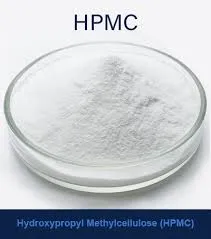
සැප්. . 30, 2024 16:48 Back to list
Exploring the Uses and Benefits of Methyl Hydroxyethyl Cellulose in Modern Applications
Methyl Hydroxyethyl Cellulose An Overview of Its Properties and Applications
Methyl hydroxyethyl cellulose (MHEC) is a versatile, non-ionic cellulose derivative that has garnered significant attention in various industries due to its unique properties and functionality. It is derived from natural cellulose, a polysaccharide found in plant cell walls, and has been modified to enhance its solubility, rheological properties, and film-forming capabilities. With its wide array of applications, MHEC plays a crucial role in commercial products ranging from construction materials to personal care items.
Chemical Composition and Properties
MHEC is synthesized through a process of etherification, where methyl and hydroxyethyl groups are introduced into the cellulose chain. This modification not only improves its solubility in water but also enhances its ability to form gels and films. The degree of substitution, which indicates the average number of substituents per anhydroglucose unit in the cellulose chain, affects its properties. Typically, MHEC shows excellent thickening, binding, and stabilizing properties, making it an invaluable additive in various formulations.
One of the standout features of MHEC is its viscosity modulation capabilities. Depending on the concentration and the degree of substitution, MHEC can produce a wide range of viscosities, which allows manufacturers to tailor formulations specifically for their needs. Additionally, MHEC exhibits thermal stability and is resistant to pH changes, making it suitable for applications in varying environments.
Applications in the Construction Industry
MHEC finds extensive applications in the construction sector, particularly in cement-based and gypsum-based products. It acts as a cellulose ether that improves workability and adhesion in materials like tile adhesives, plaster, and mortar. Its water retention ability is particularly beneficial; it keeps the mixture workable for longer periods, allowing for successful application even in challenging conditions.
The incorporation of MHEC into construction materials enhances their performance by preventing the premature drying of mixtures, which could lead to defects and compromise structural integrity. Moreover, it contributes to improved surface quality and durability of finished products, making it an essential component in modern construction techniques.
methyl hydroxyethyl cellulose

Role in Personal Care and Cosmetics
In the personal care industry, MHEC serves multiple functions ranging from thickeners to stabilizers. It is commonly found in shampoos, conditioners, lotions, and cream formulations. The ability of MHEC to create a smooth texture, while providing a pleasant feel during application, has made it a popular choice among formulators.
Additionally, MHEC is used in various applications due to its film-forming properties. In cosmetic formulations, it provides a protective barrier on the skin or hair, enhancing moisture retention and improving product performance. Its non-toxic and non-irritating nature makes it suitable for sensitive skin applications, further driving its popularity within the cosmetics industry.
Environmental Considerations
As a cellulose derivative, MHEC is considered to be biodegradable and environmentally friendly, aligning with the growing demand for sustainable products. Its sourcing from renewable materials contributes to lower environmental impact, making it attractive to manufacturers who prioritize sustainability in their product lines.
Conclusion
Methyl hydroxyethyl cellulose is a multifunctional ingredient with wide-ranging applications across diverse industries. Its excellent physical and chemical properties, such as viscosity control, water retention, and film-forming capabilities, make it an indispensable additive in construction and personal care products. As industries continue to innovate and emphasize sustainability, MHEC is likely to remain a vital component in formulations aimed at enhancing performance while being environmentally responsible. With ongoing advancements in cellulose chemistry, the future prospects of MHEC appear bright, potentially leading to even broader applications and formulations.
-
tile-bonding-additives-for-stronger-bonds
NewsAug.22,2025
-
construction-grade-rdp-for-wholesale-needs
NewsAug.22,2025
-
trusted-wholesale-hec-partners
NewsAug.22,2025
-
hec-solutions-for-industrial-excellence
NewsAug.22,2025
-
construction-additives-need-hpmc-essentials
NewsAug.22,2025
-
hpmc-versatile-cellulose-ether-for-industries
NewsAug.22,2025







